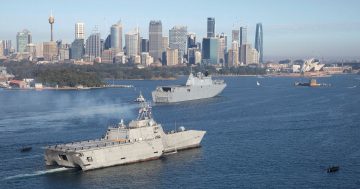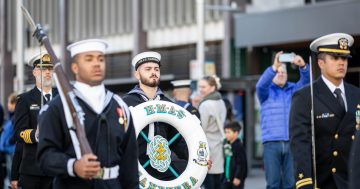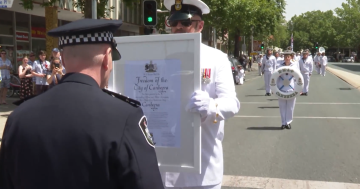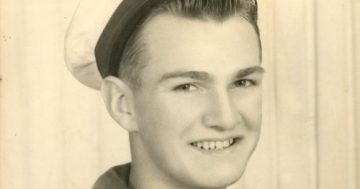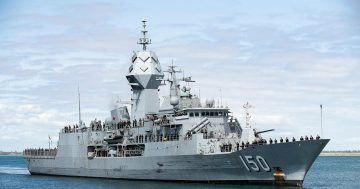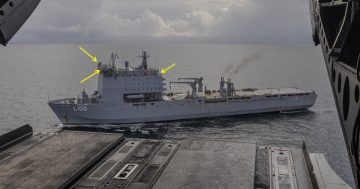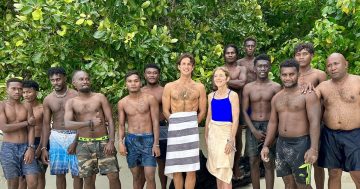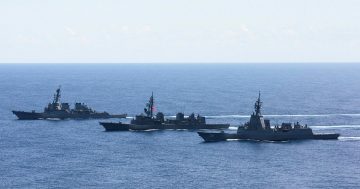
The HMAS Canberra. Photo: Royal Australian Navy.
The air was charged with the tenseness of the moment. A formidable Japanese force of warships had snuck through the defences on the southern end of the Solomon Islands only to come face to face with two Allied cruisers and their entourage of smaller destroyers.
Canberra might have been a fledgling city thousands of kilometres away on 9 August, 1942, but in another way, it was right there. Leading the Australian pack was HMAS Canberra.
It was all hands on deck. Captain Frank Getting was summoned from his sleeping quarters and the gun teams rushed into position. Seconds before they could establish an aim in the dark, however, a torrent of Japanese shellfire smothered the ship’s port side at 1:44 am.
The radio room was shot to pieces, all power was lost, and the ship’s middle was ablaze. The order was given to abandon ship and when the Japanese finally sailed off into the night after 40 minutes of hell, Canberra was nothing more than a burning, drifting and listing hulk.
A total of 84 crew members either died immediately or died from their horrific injuries, including Captain Frank Getting. The cruiser itself was sent to the bottom the next day by a torpedo from one of the US destroyers.
This week marks 80 years since our city lost its seagoing namesake in the ‘Battle of Savo Island’, but it clearly hasn’t been forgotten.
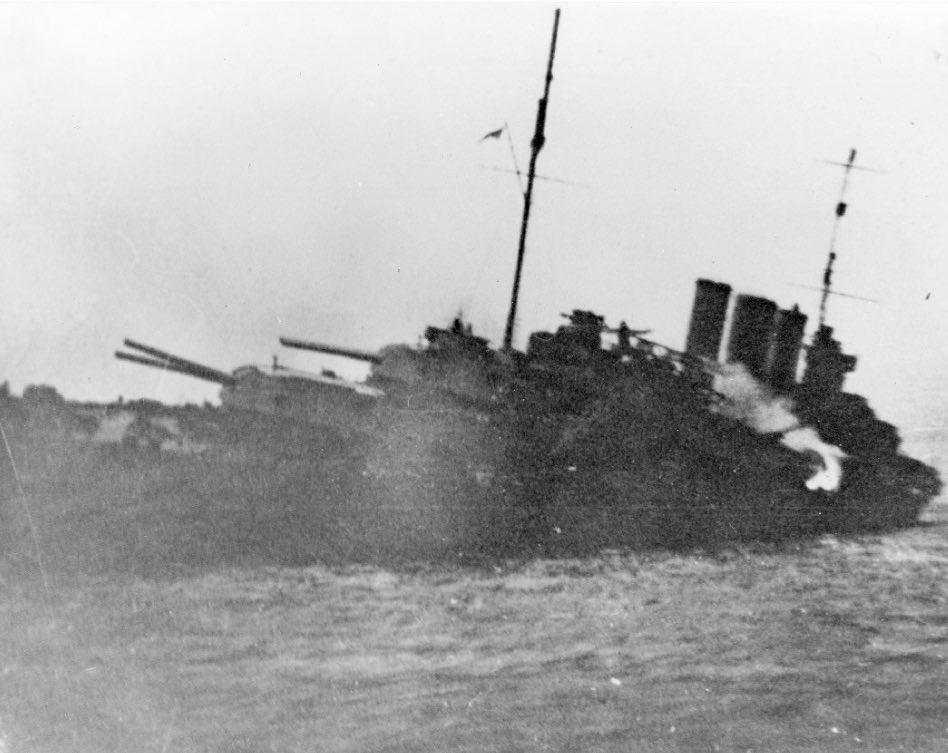
The stricken HMAS Canberra following the heated action at Savo Island. Photo: Royal Australian Navy.
A memorial incorporating a naval anchor and section of chain cable (of the same type carried by Canberra) was erected on the edge of Lake Burley Griffin near the National Carillion in 1988. The Australian Naval Association of Australia (ACT Section) has held a memorial service at the site on 9 August every year, but this year’s was extra special.
Canberra Liberals leader Elizabeth Lee, accompanied by Shadow Minister for Veterans’ Affairs Jeremy Hanson, laid a wreath to “pay respect for the brave souls who sacrificed so much for our country”.
Meanwhile, on the actual site of the sinking, 500 members of the Royal Australian Navy (RAN) gathered on the flight deck of the new HMAS Canberra III for a sunset service, laying wreaths and 84 flowers for the lost lives.
Des Jones, 99, is the last surviving crew member and remembers how he narrowly escaped death during the sea battle.
“I came off watch at midnight and was very lucky,” Mr Jones told Defence News.
Mr Jones joined the Navy as a stoker at the age of 17. The boiler room where Mr Jones had been working just hours before was struck by a torpedo on the night, killing at least eight.
Meanwhile, he and several of his shipmates had been stationed near the sickbay.
“I remember hearing the noise and the bloke standing next to me, Georgie, took the shrapnel,” he said.
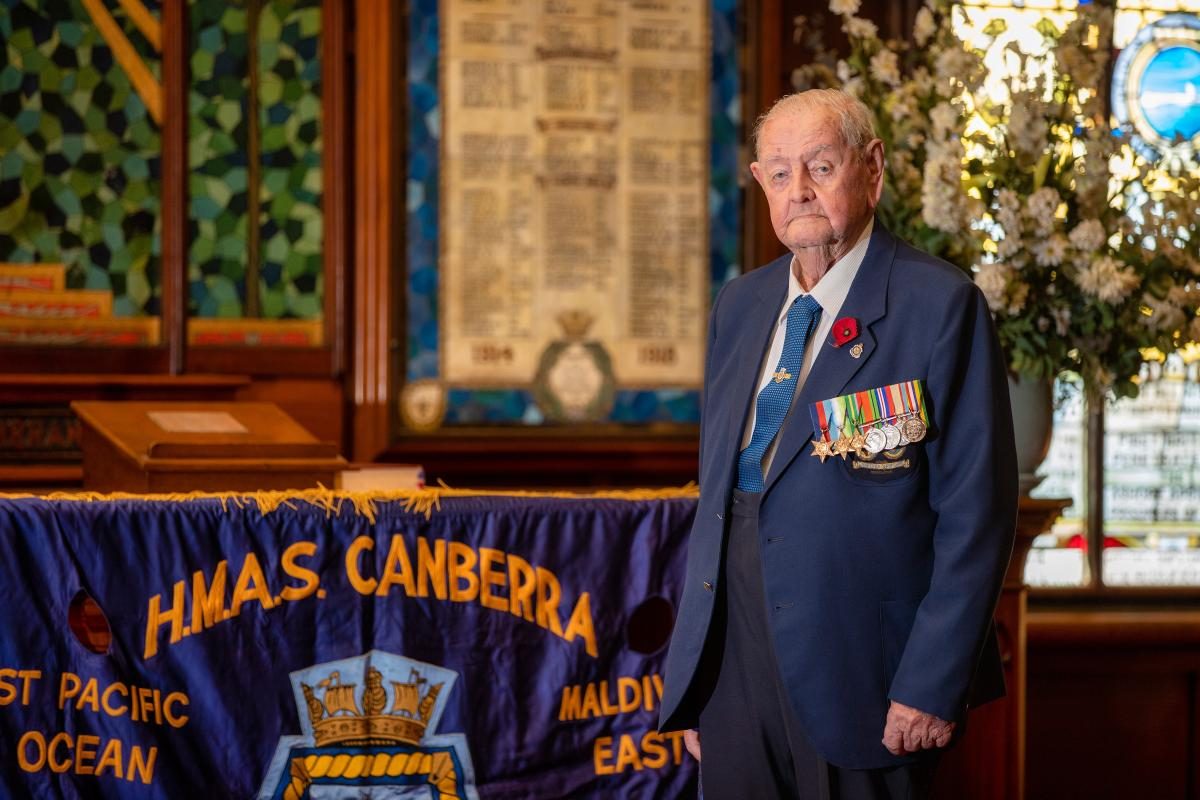
Mr Des Jones is the last remaining survivor of HMAS Canberra and now lives in Sydney. Photo: Sittichai Sakonpoonpol.
George’s hand was blown off and he asked Des to perform a grim task by rescuing the ring off one of the fingers.
“I said, ‘No, George’, and grabbed him and dragged him to the sickbay which was right next door. Didn’t see him for six years but he did survive,” Mr Jones said.
When the order to abandon ship came, those who could jumped into the water and swam out to the life rafts.
“We paddled to the starboard side of Canberra and were lucky we didn’t go down as the small arms ammo went up,” Mr Jones said. “When dawn came the Japanese were gone.”
HMAS Canberra was one of two 10,000-ton County Class heavy cruisers ordered by the Australian government in 1924, designed to replace the aging Sydney and Melbourne light cruisers. Her sister was HMAS Australia, and both were built in Clydebank, Scotland.
By the time war with Japan broke out 18 years later, Canberra had racked up more than 281,000 km of travel, mainly in escort and patrol duties. She was docked in Sydney Harbour on the night of the Japanese midget submarine attack on 31 May, 1942.
With the Japanese relentlessly marching through the Pacific, Australia realised the need to seize control of a major airfield at Guadalcanal in the Solomon Islands. ‘Operation Watchtower’ was designed to prevent the Japanese from cutting off Australia from its US ally.
Karl James is the head of military history at the Australian War Memorial and told ABC Radio on 9 August that it was a “very hot part of the fighting”.
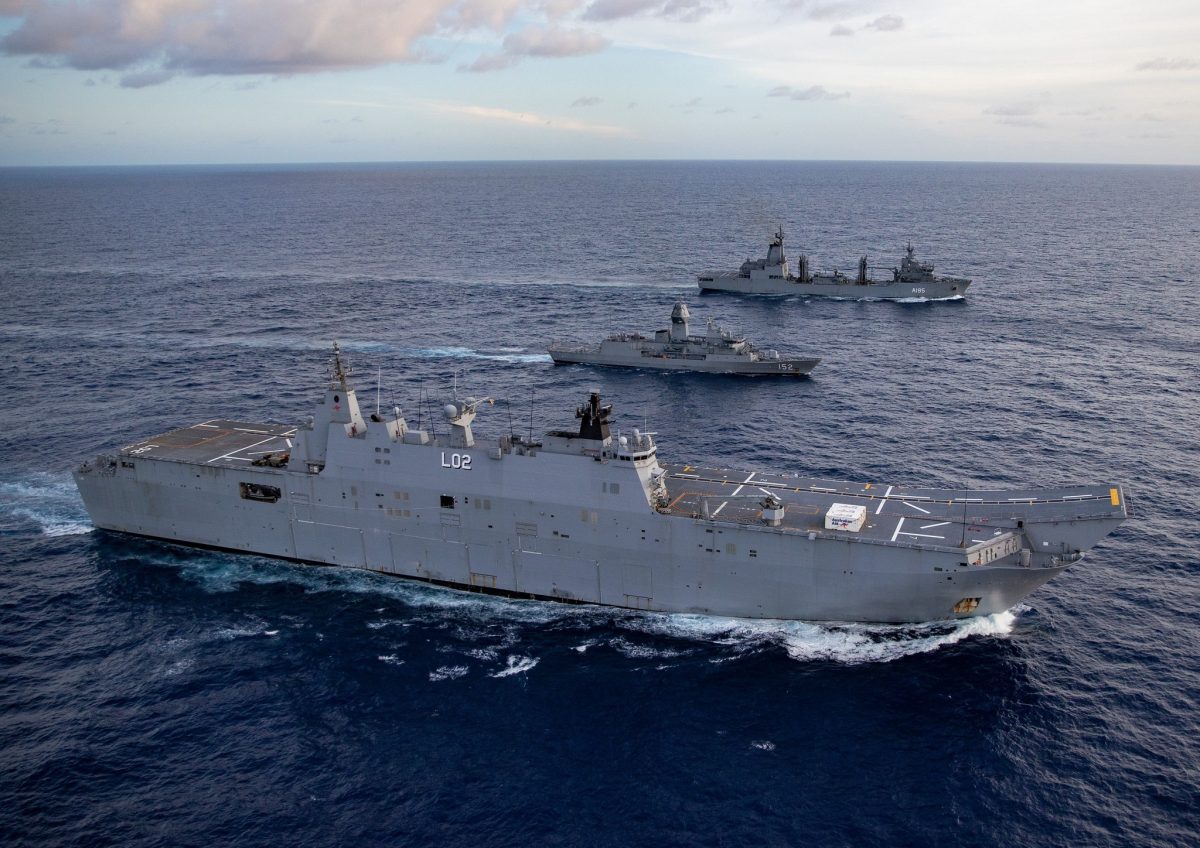
The HMAS Canberra III, the largest ship ever constructed by the Royal Australian Navy, at 27,000 tonnes. Photo: Royal Australian Navy.
“More personnel were killed fighting at sea than on the land itself, so it’s an incredibly horrific part of the fight in 1942.”
In total, 32 Allied ships were sunk in what became known as ‘Iron Bottom Sound’ during WWII. The wreck of Canberra was discovered in August 1992, lying upright on the ocean floor 760 metres below the surface.
She is survived by not only the largest ship ever constructed by the RAN, HMAS Canberra III, but former US president Franklin Roosevelt also commemorated the loss with the USS Canberra cruiser. It remains the only US warship to be named after a foreign capital city.
“We had an Australian force at a pivotal moment in the fighting, connecting us with our American allies,” Mr James said.
“Have a look at the anchor [on the edge of Lake Burley Griffin] and pause for a moment to recognise that here is a memorial to the fact our own city, our own ship, was part of that story.”












